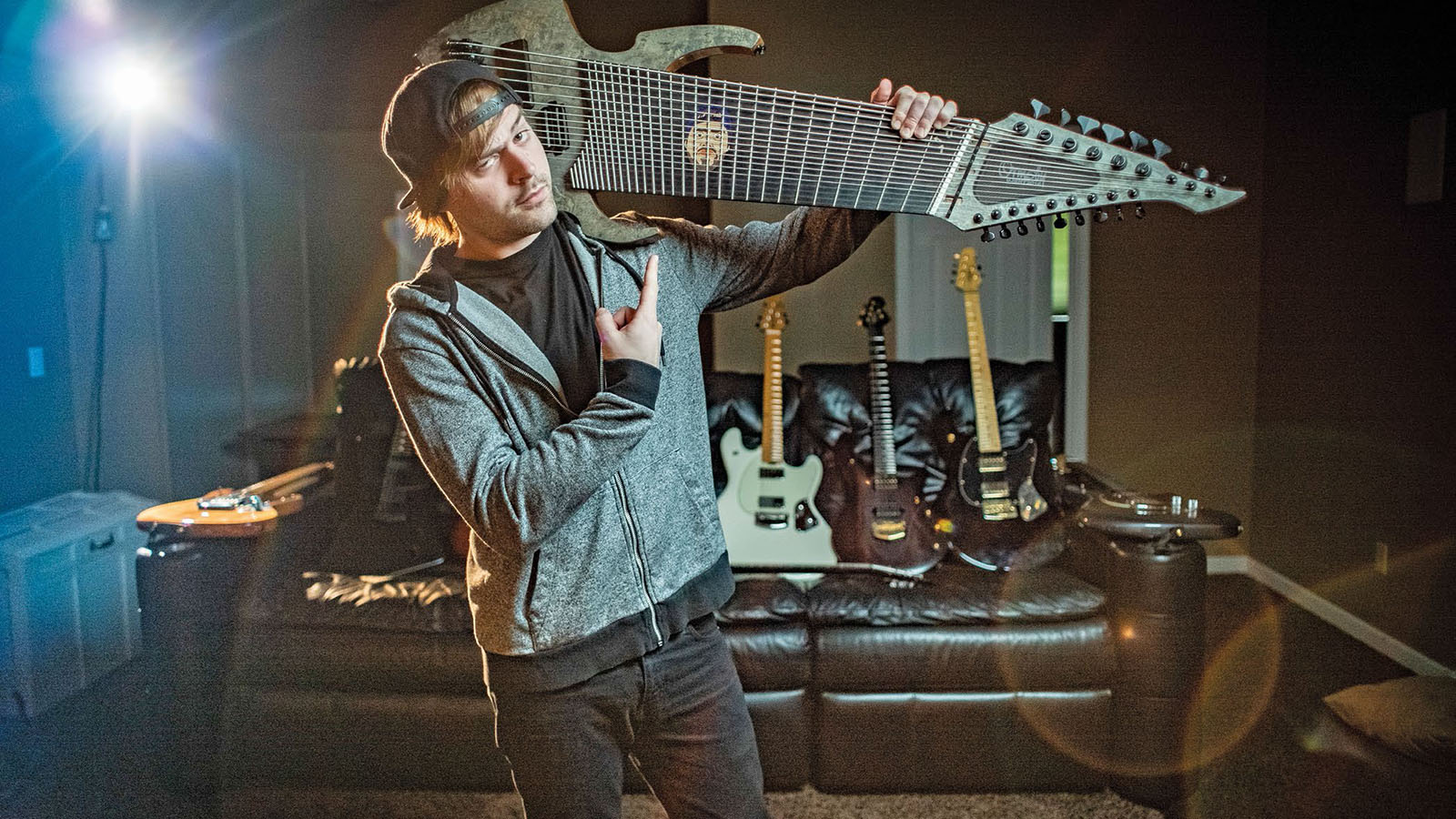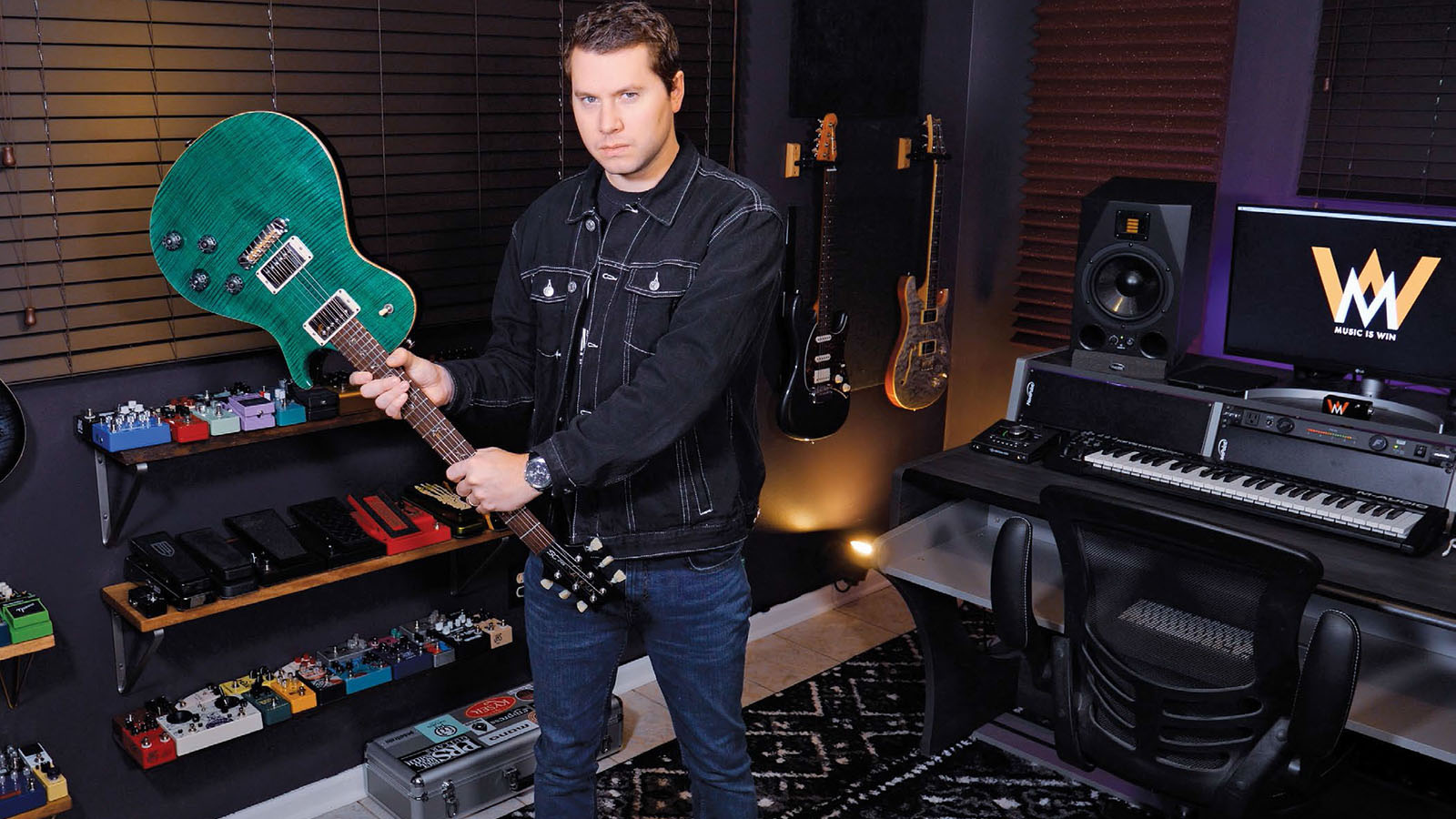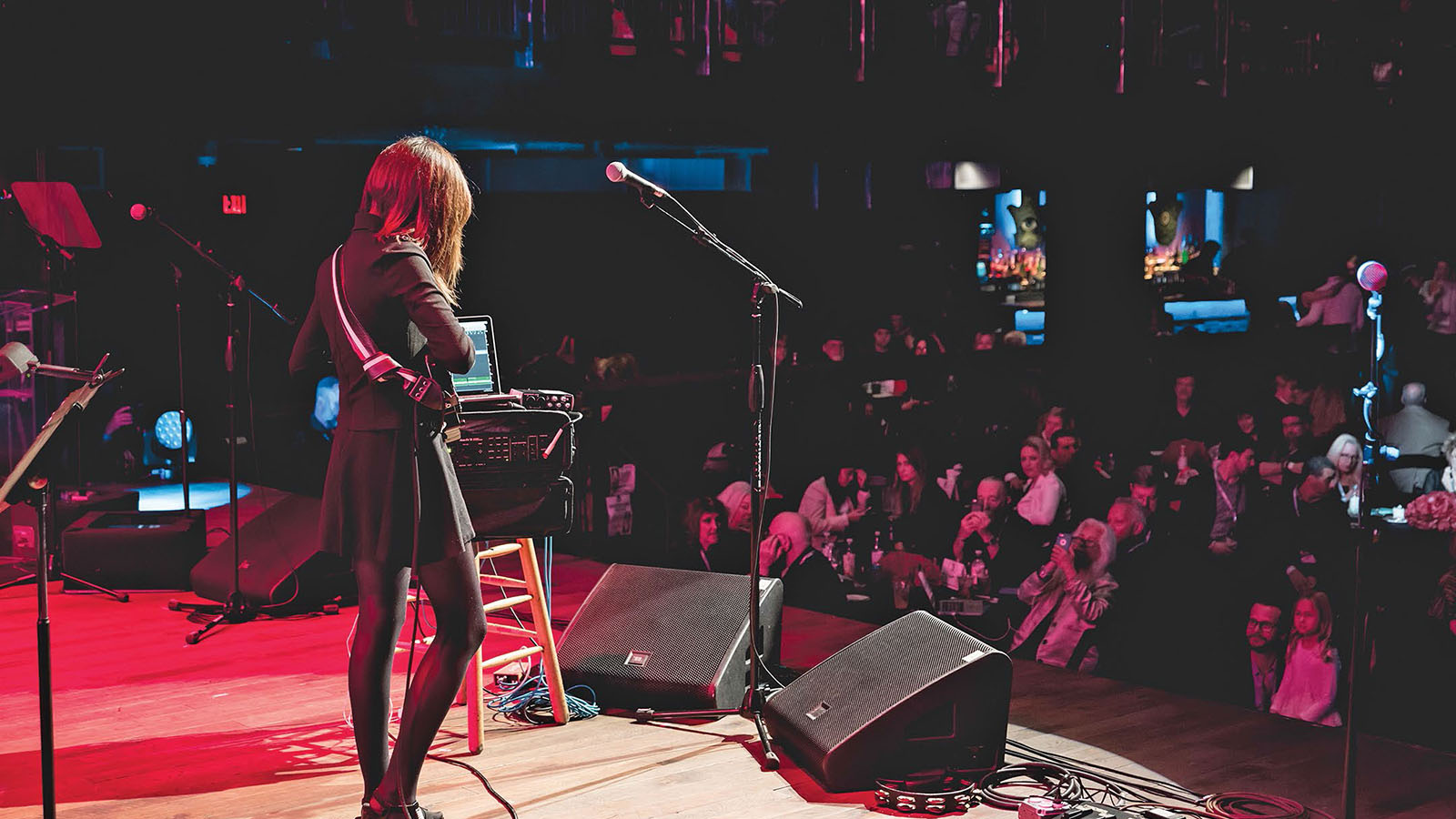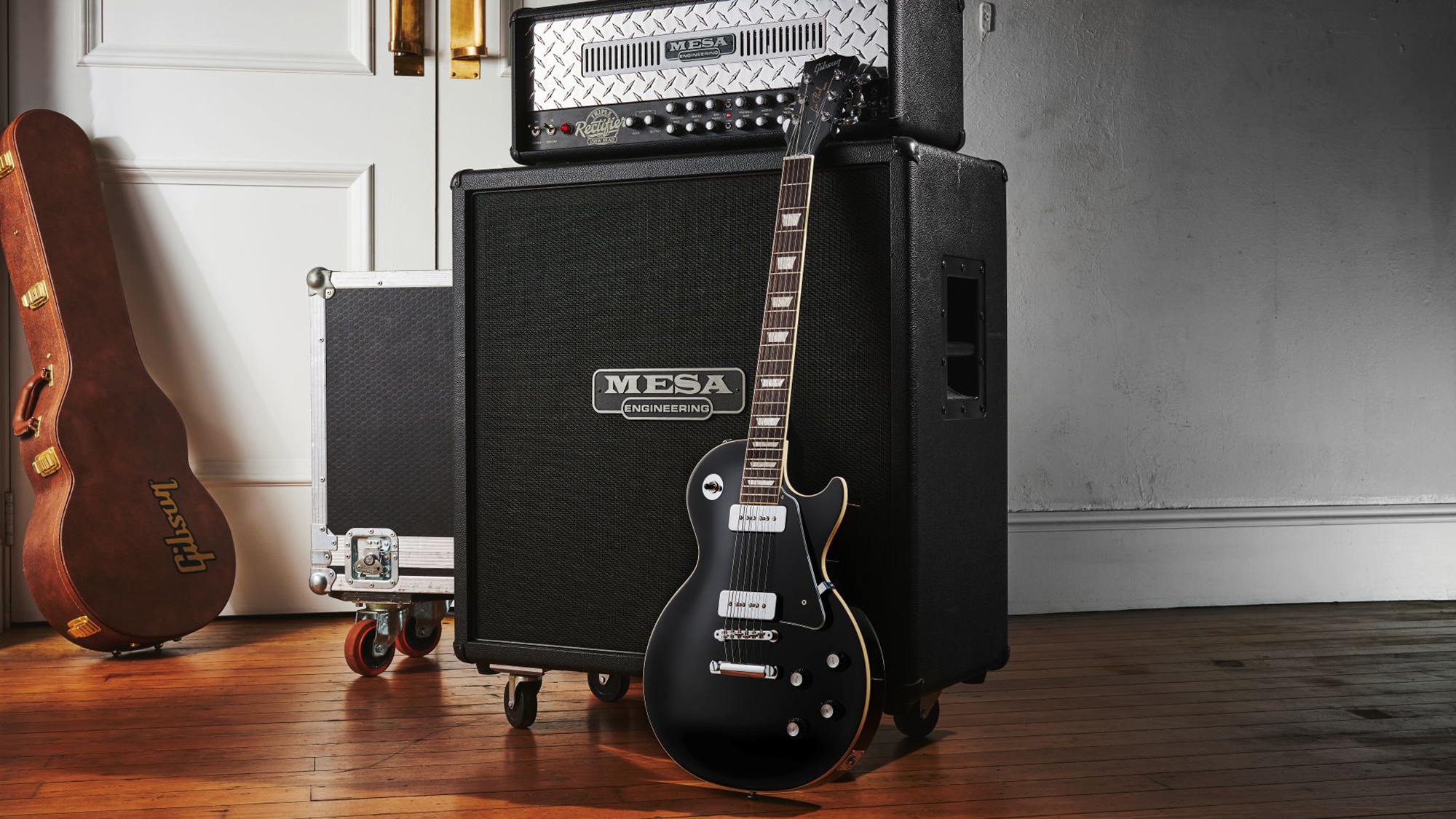From Jared Dines to Sarah Longfield: how YouTube guitar heroes' DIY approach paid off, big time
Today's biggest guitar YouTubers reveal how to make a success of video

The staccato rhythm of the opening riff to Trivium’s In Waves is blasting through Chicago’s House of Blues when frontman Matt Heafy announces a special guest. Howard Jones, the hulking former frontman of Killswitch Engage and current face of fellow metalcorers Light the Torch, comes strutting onstage and unleashes a blood-curdling scream before walking over and wrapping his arm around another guy who’s been asked to sit in.
Leaning into the crowd as he palm-mutes, Jared Dines is wearing his signature backwards baseball cap and the biggest grin imaginable. Dines might not have the portfolio of a Heafy or a Jones, but he’s got his own kind of fame. Over the past few years, Dines has reached millions of eyeballs and eardrums - not through headlining tours, but through YouTube videos with titles like 'Things Beginner Guitarists Say' and 'If Lady Gaga Was Metal'.
With more than two million subscribers, Dines has become one of the most prominent figures in the metal YouTube world, with a brand based on equal parts goofy comedy, actual musical chops and a deep knowledge of metalhead life in general and guitar culture in particular.
Video might have killed the radio star, but it’s unlikely that streaming is going to kill the metal god. Still, a creative pack of musicians, equally comfortable with cameras and Les Pauls, are showing that it’s possible to get your music — and your jokes — out to a wide audience: no record company or radio play needed.

Days after the Chicago show, as Trivium are getting ready to play in the North Dakota town that pop-culture writer Chuck Klosterman once called 'Fargo, Rock City', Dines is reflecting on his unlikely rise to becoming one of the leaders of the 'YouTube guitar universe' pack.
“I definitely had no idea what I was doing when I first started,” he says. “I’ve always been a huge fan of music and metal and guitar. Ever since I was a kid, I enjoyed making little home videos.”
The music world can be a self-serious place, with artists spouting profound-sounding sound bites about artistry and integrity. But the day-to-day absurdities are rife for piss-taking: for every moment of artistic breakthrough in a writing session, most rock musicians go through hours of mundanity in guitar stores, studios, jam rooms and tour vans. That’s why Dines videos such as 'Things Audio Engineers Say in the Studio' or 'Things Guitarists Never Say' hit such a chord.
All the latest guitar news, interviews, lessons, reviews, deals and more, direct to your inbox!
But while being funny for the sake of being funny is great, it’s ultimately a means to an end. While Dines is making some money from YouTube, it’s more important as a marketing tool, pushing fans to buy his merch or attracting sponsors.
For several years, Dines teamed up with fellow YouTuber Ryan 'Fluff' Bruce in hard rock band Rest, Repose but took great pains to say his channel wasn’t meant to promote the band, even as it brought in bigger crowds to the shows. (Dines left the band in February.) But other YouTube guitarists are less hesitant about making videos to help sell themselves in other ways.
Tyler Larson, who posts under the name Music Is Win, is another content creator who enjoys poking at the quirks of guitar culture. (His video 'Bass Is Easy' will probably get chuckles from six-stringers, while sending our low-end brethren into screaming fits about Billy Sheehan.)
In his videos, Larson - a former GuitarWorld.com contributor - regularly pushes his Guitar Super System subscription series of lessons, offering a taste on YouTube by demonstrating riffs, giving pointers on gear and dissecting theory. But unlike hundreds of other teachers putting up dry videos demonstrating the CAGED system, Larson’s method relies on a healthy dose of screwing around.
“I don’t think putting up a video saying, ‘Hey, I’m a guitar teacher, go buy my stuff’ was a very good value proposition to pitch to people on the internet,” he explains. “I figured I would try and gain some attention, just injecting a little bit of humor into what I do and creating stuff I would want to watch.”
Of course, still others are using YouTube to push the music they’ve written. Take Leo Moracchioli, the lanky, braided-beard Norwegian whose metal covers of pop hits have gotten him mainstream radio play and invitations to take part on the concert-on-a-cruise Shiprocked alongside Stone Sour and Seether.
Over the past four years, Moracchioli has tackled everything from Adele to ZZ Top, Cotton Eyed Joe to The Macarena. He didn’t invent reimagining songs in genres very different from the original, but his tireless work ethic (he’s posted more than 260 covers in less than five years, along with miscellaneous vlogs and tutorials) and visual panache set him apart.
Sure, you can find other metal covers of the Bloodhound Gang’s pornographic hit The Bad Touch, but can you find one where the artist plays every instrument and dresses up like a big fuzzy rabbit or wears happy-face contact lenses in the music video?
Moracchioli originally was doing YouTube videos in conjunction with recording bands in Frog Leap Studios, the facility he opened in his home. For two years, though, he’s been focusing solely on his channel, where he directs viewers to entire compilations of his covers on Amazon and iTunes.
“I’m one guy sitting here with 20 albums in four years, and it’s selling like crazy,” he says. “Without naming numbers, it’s insane financial craziness for me, especially compared to some of the guys. What I earn most on is selling my music, and then you have the ads and Patreon site.”
When my label signed me, they said, ‘We saw you on YouTube, and your video got a million views. Why haven’t you been signed?’
Sarah Longfield
While Moracchioli rarely plays live, preferring to spend his time with his wife and daughter (both of whom have made appearances in his videos - content creation can be a family business), Sarah Longfield has used a decade-long YouTube presence to launch a more conventional music career.
Less skit or comedy-focused than others, her channel showcases her mind-boggling technique and chronicles her evolution from covering Pantera and Meshuggah tunes as a teen to her recent output that, while still based on insane guitar playing, owes more to electronic artists like Bonobo.
She’s still keeping a foot in the metal game, recently touring with Wintersun, Felix Martin and Archspire, but says with a record deal in hand, she’s hoping to move away from that genre and bring her YouTube followers along for the ride.
“It ended up being a great resume for me because when the label signed me, they said, ‘We saw you on YouTube, and your video got a million views. Why haven’t you been signed?’,” she says.

Music has long been a competitive calling - back in the era when bands would kill to get their music on the radio, when getting consumers to drop their cash on a CD was the ultimate end-goal, bands were fighting for limited resources. But consumers now watch YouTube for free, and artists are learning that they don’t need to fight.
Run a piece of string between content-creating guitarists, and you’ll soon end up with a gigantic knot. Dines, Longfield and Larson were among the participants in an all-star team up that produced the song and video Dread Machine. Moracchioli has had substantial amounts of cameos on his various covers. While touring the country for a video series based around visiting guitar stores in all 50 states, Larson says he’s hoping to stop in to see some of his favorites and possibly record some team-ups.
“YouTube collaborations are incredible. They benefit both artists, everyone involved gets something out of it. You’re sharing your market,” Longfield says.
“All of a sudden, your videos pop up on their sidebar, their videos pop up on your sidebar. It’s a bunch of Type A, go-getter people who just want to work, work, work all the time. It’s so inspiring to be around. The music industry is the polar opposite! Everybody is fighting tooth and nail to get anywhere.”
“There definitely is a whole community there,” Moracchioli adds. “Especially at the Winter NAMM Show in Anaheim, California, [where] we met, and I’ve become friends with a lot of them, especially the UK guys. We all know each other.
“Rob Scallon, I talk with him all the time on Facebook. We all know each other and if there’s anything, we ask, ‘Hey, want to join on this or this?’ If it doesn’t fit, it doesn’t fit, but we’re all very cool. It never felt like a business; it’s just fellow musicians helping each other out because we’re all in the same situation.”
In his early days, Dines got a major boost via collaborations with fellow old-timer Scallon, and the two still frequently trade riffs and solos for their fans’ entertainment. (Scallon also gave an early boost to Longfield, sparking a series in which the two cover Slayer and Cannibal Corpse songs on ukuleles, to hilarious and frequently terrifying effect.) It’s a fun way to keep things fresh, but also to meet new friends and business partners.
“It’s a smart thing to do - collabs are great,” Dines says. “A lot of people have collab’ed with me and a lot of smaller YouTubers see a growth from that. I’m sure I’ve seen growth from previous collabs as well. It’s more like I’m a fan of that artist or that musician, and I think we can do something really cool together.”
As far as I know, if your content is good, then people watch
Tyler Larson, Music Is Win
Talking to musician YouTubers, they’ll deny the cross-channel appearances are simply about analytics. None would admit to looking at a particularly successful video and copying it for more views. There’s an admission of looking at what’s worked well for them and keeping it in mind, but gaming the site’s algorithmic system doesn’t hold much appeal.
“I think people say the phrase ‘YouTube algorithm’ without actually understanding what it means,” Larson says.
“As far as I know, if your content is good, then people watch. I think there’s maybe certain elements to the platform that will boost your video up, but I’m not as concerned with that as I am with creating the best content. The only thing I can control is how good the content is.”
Another thing that can be frighteningly out of control for a creator is how much of their personal life can bleed into their work. Though there’s no paparazzi chasing them, fanbases can be hungry to know the real person. Some cases can be harder to deal with than others.
“How much are you willing to give of yourself?” Longfield asks. “If I had it my way, I would much rather be releasing music and art and stuff without my face attached to it. I don’t really love being in front of the camera. I hate to say it, but as a girl, there’s so much focus on your appearance and aesthetic, it kind of takes away from what I’m creating. Positively or negatively, people view it through a different lens.”
Even without that kind of pressure, there can be demands to share more than you might want. After suffering burnout, Dines felt the obligation to post a video explaining his exhaustion after years of posting consistently. More recently, Dines confessed to his followers that he had spent years quietly suffering from depression and anxiety but vowed to continue making videos while seeking help for his mental health.
“If it’s anything that affects my work or my state of mind or something serious, I try and keep them in touch with that,” Dines says.
“I feel like that’s fair to them, to know what to expect from me, what I’m going through and just be real with them… When you’re in a job that’s solely based on what your mind can create, sometimes you just can’t come up with a song. You can’t come up with a new joke, you’re just not in the right mindset.”

While there is a tight-knit guitar scene on YouTube, it’s a field that gets more crowded by the day. Since the end of MTV’s video era, countless unsigned artists have turned to YouTube as a means of promotion. With a good camera and some creativity, there’s nothing to visually separate some weekend warriors from the rock stars with thousands of dollars in their video budgets.
The approach hasn’t gone unnoticed. Rather than YouTubers trying to emulate rock stars, it’s gone the other way. Even as more people join up in their bid to become YouTube famous, conventionally famous people are rushing in, eager to find new audiences who are growing up in an era where watching videos on cable television must sound adorably quaint. Heafy is typical of this new approach, running a successful channel of his own and streaming himself pwning n00bs at Fortnite on his Twitch channel.
Given the band’s comfort with that type of controlled intimacy, it was a logical step for Dines to hit the road with Trivium, uploading regular content from the tour to his channel, from backstage looks at life on the road to footage of the shows.
With established players getting into the game, the YouTube field is crowded - a gigantic year-end collaboration of shredders posted to Dines’ channel showcased 30 guitarists soloing their brains out. For those just getting into the game, it can seem like a daunting task to try and make a name for themselves. The bad news is, it is really, really difficult. The good news is, those who have already made it have some words of advice.

“Try to know a little about everything,” Moracchioli says. “I’m not a fantastic guitar player or video guy, but I know a little about everything. If you know a little about video and music and maybe recording and being creative, YouTube is perfect.”
“It’s really just sticking with it,” Longfield adds. “You have to do it so much and for so long. Some people can just start up, and right away they pick the right thing and do it at the right time and it works, but I think more than anything consistency is key.”
In addition to that consistency, Larson says aspiring YouTubers should have authenticity - a creative voice that is true to them - and quality - a desire to keep improving on their content, whether it be figuring out better camera angles or working on their voiceovers.
Don’t try to be your favorite YouTuber; don’t take what your favorite YouTuber does and re-emulate it
Jared Dines
“It is very hard and it’s something you have to work for like anything else,” he says. “I will say, it’s probably the best job in the world because of what doors it opens up if you’re willing to put in that grind. It can sometimes take years, depending on your content type to get to a place where you’re feeling comfortable. The one thing I’ve learned about all YouTubers who are successful that I’ve met is the work ethic. It’s really hard to be your own boss and not punch a time clock, but it’s also really liberating.”
In some ways, being a good YouTuber is the same as being a good guitarist. You’re constantly looking to improve, looking for inspiration, trying to find your own way of expressing yourself that’s different from everybody else out there.
It’s said that if you hear Steve Vai or Slash or David Gilmour play a note through somebody else’s rig, you can still tell it’s them. The same goes for making videos - you have to hone your technique until you’re unmistakably you.
Take it from Dines, a guy who turned messing around with a video camera and making skits with his friends into guest spots onstage with bonafide rock stars.
“Don’t try to be your favorite YouTuber; don’t take what your favorite YouTuber does and re-emulate it,” he says. “I see a lot of that with not just my content but other guitar players’ content as well. Try and do something original. You can do it with something you’re really knowledgeable about and something you can really give to YouTube that hasn’t been given to them 10,000 times already.”
Adam is a freelance writer whose work has appeared, aside from Guitar World, in Rolling Stone, Playboy, Esquire and VICE. He spent many years in bands you've never heard of before deciding to leave behind the financial uncertainty of rock'n roll for the lucrative life of journalism. He still finds time to recreate his dreams of stardom in his pop-punk tribute band, Finding Emo.

